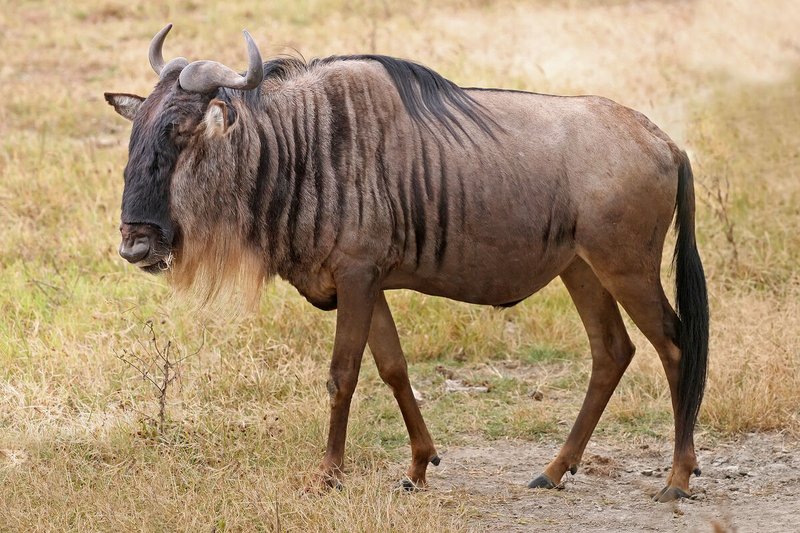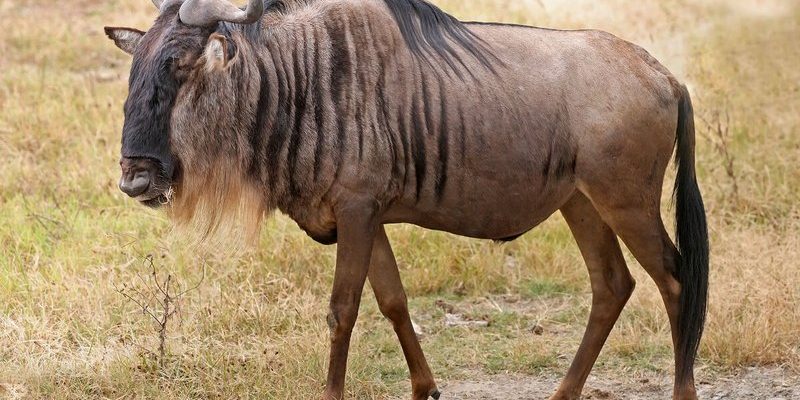
So, how did the wildebeest come to be the animals we see today? The story all begins millions of years ago, deep in the mysterious annals of time. From their ancestors to their current place in our hearts and ecosystems, the evolutionary journey of the wildebeest is both intriguing and enlightening. Grab a cup of coffee, and let’s dive into this captivating tale.
The story of the wildebeest starts way back in the **Miocene Epoch**, around 23 million years ago. During this time, ancestors of the wildebeest roamed alongside other early ungulates, or hoofed animals. These ancestors were quite different from what we know today as wildebeests. Let’s call them the **ancient grazers**—imagine them as small, nimble creatures that could easily weave through dense vegetation.
Over time, as environments changed and grasslands spread across Africa, these ancient grazers adapted to their surroundings. Their bodies became more suited for grazing on grasses and traveling long distances, which was necessary for survival. This adaptability set the stage for the evolution of the wildebeest we know and love today.
You might be wondering how these species evolved into modern wildebeest. Well, it wasn’t overnight. It involved a series of changes over millions of years, with natural selection favoring those who could cope with the changing landscapes and find food effectively. And so, the ancestors of the wildebeest began to carve their niche in the vast African savanna.
Fast forward to about 1.5 million years ago, and you’ll find that the true **wildebeest** emerged into the world. Today, there are two species: the **black wildebeest** (Connochaetes gnou) and the **blue wildebeest** (Connochaetes taurinus). While both species share some similarities, they have distinct traits.
The black wildebeest has a more slender body and impressive, curved horns. They often prefer the open plains and grasslands of southern Africa. The blue wildebeest, on the other hand, is bulkier and has a more pronounced mane, giving it a distinct look. You’ll find them in a variety of habitats, from savannas to woodlands.
This divergence is a great example of how animals adapt to different environments. By developing unique physical traits and behaviors, each species has been able to thrive in its own niche, all while maintaining a common ancestry. Isn’t it incredible how nature works?
Wildebeests are fascinating not just because of their evolutionary history, but also because of their remarkable adaptations. One of the key survival strategies of the wildebeest is their **migration** patterns, which are among the most impressive of any animal species. Each year, thousands of wildebeests partake in a massive migration across the Serengeti in search of fresh grass and water.
During this journey, they face numerous challenges, including natural predators like lions and crocodiles. But here’s the thing: their numbers provide a form of protection. The sheer volume of wildebeests means that while some may fall prey to predators, many will survive and continue the cycle of life.
Additionally, wildebeests have a strong social structure. They often gather in groups, which helps with both protection and feeding. By working together, they can better spot danger and ensure that the majority of the herd remains safe. This social behavior ties back to their evolutionary history, showcasing how collaboration can lead to greater chances of survival.
Wildebeests are more than just fascinating creatures; they play a crucial role in their ecosystems. Their grazing habits help maintain the balance of grasslands, promoting new growth and preventing overgrowth. This grazing behavior benefits not only wildebeests but also other herbivores that share their habitat.
Moreover, as wildebeests migrate from one area to another, they contribute to the cycle of nutrients. Their movement across the landscape helps spread seeds, while their dung acts as a natural fertilizer. The presence of wildebeests can encourage a diverse range of plants, which in turn supports various other species in the ecosystem.
You might think of them as the unsung heroes of the savanna—nurturing the land that sustains countless forms of life around them. It truly puts into perspective how interconnected all living things are.
As fascinating as the wildebeest’s evolutionary history is, it hasn’t been without challenges, especially when it comes to human interaction. Habitat loss due to agriculture and urban development has been a significant issue for these animals. Their natural migration routes are often disrupted, putting additional pressure on their populations.
Conservation efforts are vital in ensuring the future of wildebeest populations. Various organizations work to protect their habitats and raise awareness about the importance of these creatures in the ecosystem. National parks and reserves in Africa are crucial for safeguarding their migration routes and providing safe spaces for these iconic animals.
It’s a reminder of how our actions can impact other species. By supporting conservation measures, we can help ensure that future generations will experience the stunning sight of wildebeests migrating across the plains.
Today, wildebeests remain a symbol of the African wilderness. Their majestic migrations continue to draw tourists and wildlife enthusiasts from all over the globe. However, as climate change and human expansion pose new threats, the future of these animals is uncertain.
Efforts to study and monitor wildebeest populations are more important than ever. Scientists track migration patterns, analyze health, and observe environmental changes to understand how to best help these animals adapt. Protecting their habitats and ensuring they have access to food and water will be key in maintaining their populations.
Honestly, the tale of the wildebeest is ongoing. As they navigate their world, we learn more about the resilience of nature and the importance of coexistence. If we play our part, perhaps we can continue to witness this incredible species thrive.
In conclusion, the evolutionary history of the wildebeest is a rich and intricate tale woven through millions of years of change. From their ancient ancestors to their crucial roles in modern ecosystems, they remind us of the beauty and complexity of life on Earth. By understanding their journey, we can appreciate and protect these remarkable animals for generations to come.

